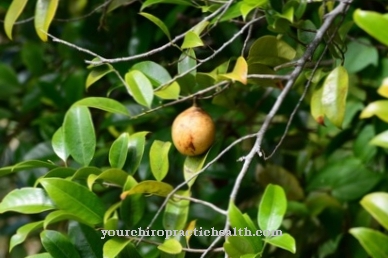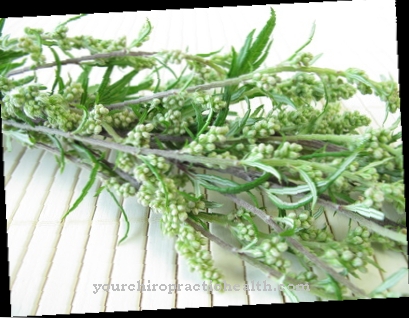The Real verbena is a traditional medicinal plant. It was already used in ancient times.
Occurrence and cultivation of the real iron herb

The origin of the medicinal plant is believed to be in the Mediterranean area.
Today verbena can be found both in the northern hemisphere and in temperate climatic regions. Material that can be used for medical purposes is collected in south-east Europe. Verbena grows there as a wild plant. The medicinal plant thrives best on pastures, in gardens, on roadsides as well as on walls and rubble. Verbena is one of the herbaceous, perennial plants. It can reach a height of up to one meter.
The square, hard stem reaches an average height of 30 to 50 centimeters, but can sometimes reach 80 centimeters. A typical feature of the leaves are their deep indentations. There are some hard side branches above the leaves. From these the flowers are carried, the color of which is light pink. On the ears they grow upwards. The flowering time of the iron herb is between June and September.
Effect & application
The Real verbena contains some effective ingredients. These are tannins, essential oils, alpha-sitosterol, flavonoids, silicic acid and bitter substances. The plant also contains caffeic acid, iridoid glycosyls such as verbenaline, hastatoside and aucubine, as well as mucilage. Various positive effects are ascribed to verbena. The plant has an antibacterial, anti-inflammatory, stimulating and astringent effect.
It is also considered to be diuretic, blood-purifying, analgesic, antispasmodic, tonic and sweaty. The verbena is primarily used therapeutically in folk medicine. It can be used both internally and externally. The medicinal plant is mostly taken in the form of tea. To brew verbena tea, the user pours two teaspoons of fresh or dried herb with a cup of hot, boiled water. The tea then steeps for five to ten minutes and can then be strained. When the verbena tea is ready, it can be drunk in small sips three times a day.
The tincture is another possible application. The patient also takes between 10 and 50 drops of this three times a day. For internal use, however, finished drugs such as dragees or drops are also offered. Unless otherwise prescribed, the average daily dose is 4 to 5 grams of verbena.
The real verbena has also proven itself when used externally. It is traditionally used to treat wounds. In earlier times it was used in wars to treat wounded fighters. It was also used to treat ulcers and skin eczema. For external use, a compress is soaked in verbena tea. The compress then remains on the patient's wound.
It is also possible to apply envelopes and washes. Partial baths in verbena tea are also helpful. In the event of a cold or inflammation in the mouth area, verbena tea can also be gargled. Verbena preparations such as creams, coated tablets or drops are available in pharmacies.
Importance for health, treatment & prevention
Verbena was already used for therapeutic purposes in ancient times. The plant was carried by Roman legionaries and was supposed to protect them from injuries. Verbena was also widely used as a love potion or to clean temples. The ancient Egyptians called the plant "Tear of Isis" and used it for various ceremonies. In the Middle Ages, verbena was one of the most important medicinal plants and was used in countless potions. In Wales the plant was used to drive away evil spirits. The verbena was even supposed to confer immortality.
Today verbena is almost forgotten and is only used by folk medicine. Conventional medicine, on the other hand, is hostile to the plant. So there is no scientific evidence for the effectiveness of the herb. Folk medicine, on the other hand, uses verbena for various purposes. Among other things, the remedy is considered helpful for complaints and diseases of the respiratory tract. These include a sore throat, bronchitis, whooping cough, tonsillitis, catarrh of the upper respiratory tract and fever.
Verbena is also used for digestive problems such as liver weakness, biliary weakness and heartburn. The herbal remedy can also be administered to treat various women's ailments. The medicinal herb is considered to promote menstruation and milk, regulate the female cycle and support menopausal symptoms.
Another popular area of application is skin problems and wounds. The verbena is given externally for poorly healing wounds, cuts, ulcers, bruises, minor burns, eczema and boils. Another positive property of the real iron herb is its blood-purifying effect. So the blood is thinned and re-formed. Further areas of application for the medicinal plant are rheumatism, gout, diseases of the spleen, edema, states of weakness, inflammation of the eyes, migraines, weak nerves and nervousness.
In addition, homeopathy uses verbena for therapeutic purposes. So it is used against cerebral seizure disorders and hematomas. Harmful side effects are not to be feared by taking the real iron herb. There are also no interactions or contraindications. Therefore, the use of the plant is considered safe.



























